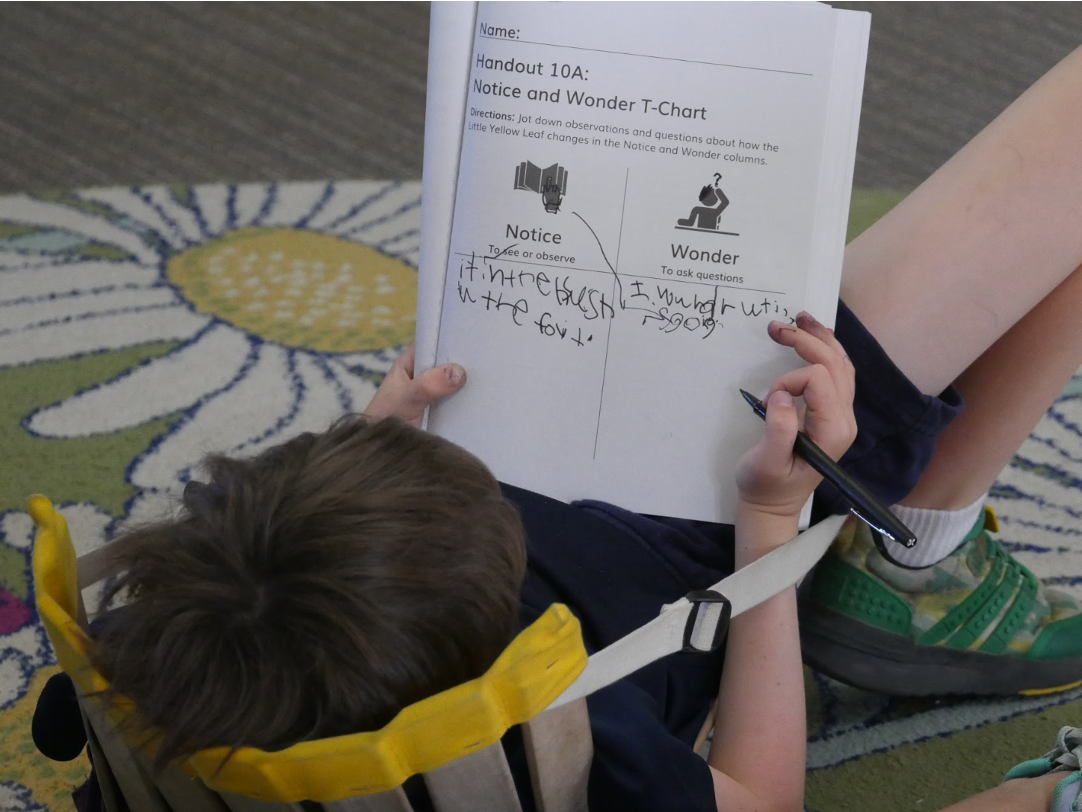“The first thing we’re going to do is compare and contrast our new book, The Little Yellow Leaf, with the book we read last week…”
2nd Grade readers and thinkers are flexing their comprehension skills, comparing, contrasting and analyzing books of various genres about Fall. In their Wit and Wisdom journals, students made a “Notice and Wonder” chart about their new book, comparing it to their chart from the previous book of study, How Do You Know It’s Fall? by Lisa M Herrington (you can see each book read aloud here & here).
Students shared noticings like, “They’re both about leaves and The Little Yellow Leaf looks like it might be fiction and the other one is not fiction.”
Their teachers probed for thinking, responding, “Let’s look and see, what about this cover makes it look like it’s fiction?”
Students shared evidence connected to their claims, like, “I don’t think the sky would be yellow and I don’t think the leaves would fly in circles [if it was non-fiction].”
Others responded with predictions, like, “It looks like fiction but I think it’s going to also tell you some real things about leaves.”
It looks like fiction but I think it’s going to also tell you some real things about leaves.
As their teacher read, students each made their own chart, then discussed their noticings, including new vocabulary words (beckon, musky, flocks, genre), reflections on a social-emotional message about friendship and not being quite ready for something, and connections between this story and other things they know and enjoy. As students learn from an early age to close-read and to connect evidence from the text to claims they are making, they can come to appreciate stories even more — and to surprise even their teachers with their level of insight.

